您好,登錄后才能下訂單哦!
您好,登錄后才能下訂單哦!
Neo4j是現今最火爆的圖數據。在2010年發布,產品的發展勢頭還算不錯。
作為圖數據庫,Neo4j最大的特點是關系數據的存儲。
圖數據庫除了能夠像普通的數據庫一樣存儲一行一行的數據之外,還可以很方便的看出存儲數據之間的關系信息。
適合存儲”修改較少,查詢較多,沒有超大節點“的圖數據。
根據用戶與其他用戶的關系為用戶推薦新的朋友。例如,在QQ中給你推薦朋友的朋友 。
通過分析用戶有哪些朋友、用戶朋友喜好的產品、用戶的瀏覽記錄等關系信息推測用戶的喜好進而為用戶推薦商品。
根據知識點間的關系建立圖譜,幫助用戶搜索到關聯的知識。例如在百度上搜索Neo4j,會同時出現MySQL等類似的內容。
通過記錄軟件行為的各種關系數據,例如其訪問了哪些IP、訪問了哪些系統資源,進而分析軟件行為是否具有惡意。
網絡、數據中心這些基礎設施自身就是一個包含復雜關系的網絡,利用Neo4j可以方便的建立設備之間的關系,以便于對整個系統的管理。
下載Neo4j
下載地址:https://neo4j.com/download-center/#community
包地址:https://neo4j.com/artifact.php?name=neo4j-community-3.5.6-unix.tar.gz
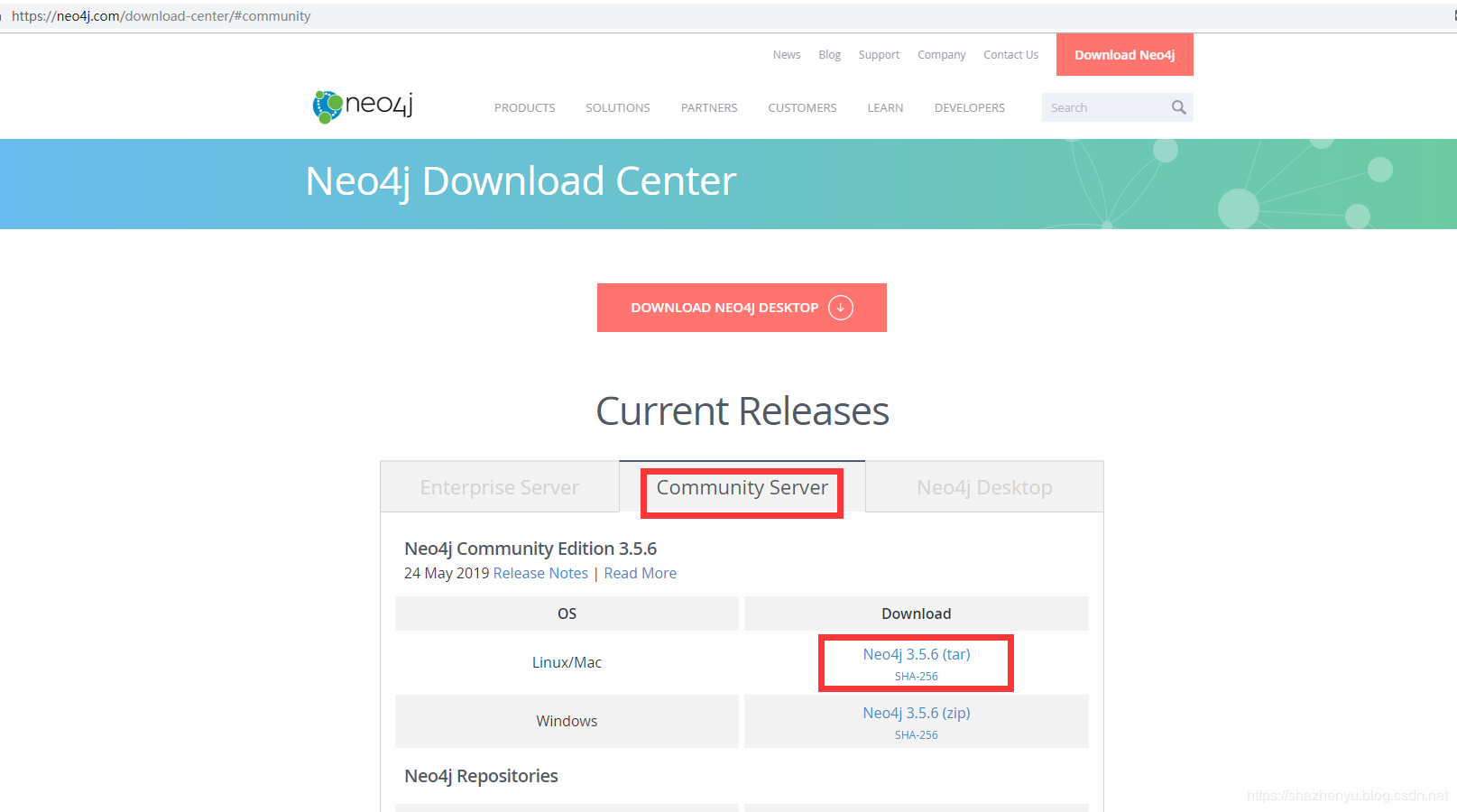
下載 3.5.6 版本
curl -O https://neo4j.com/artifact.php?name=neo4j-community-3.5.6-unix.tar.gz
tar -zxvf neo4j-community-3.5.6-unix.tar.gz
移動文件夾
mv neo4j-community-3.5.6/ /usr/local/neo4j
效果

配置文件路徑

1、修改第22行load csv時路徑,在前面加個#注釋掉,可從任意路徑讀取文件
#dbms.directories.import=import

2、修改35行和36行,去除注釋,設置JVM初始堆內存和JVM最大堆內存
(理論上JVM最大 堆內存越大越好,但是要小于機器的物理內存)
dbms.memory.heap.initial_size=512m
dbms.memory.heap.max_size=1g

如果不知道還剩多少,可以用linux命令free -m

3、修改46行,可以認為這個是緩存,如果機器配置高,這個越大越好
dbms.memory.pagecache.size=5g

4、修改54行,去掉改行的#,可以遠程通過ip訪問neo4j數據庫
dbms.connectors.default_listen_address=0.0.0.

5、默認 bolt端口是7687,http端口是7474,https關口是7473,不修改下面3項也可以

dbms.connector.bolt.listen_address=:
dbms.connector.http.listen_address=:
dbms.connector.https.listen_address=:
去掉注釋
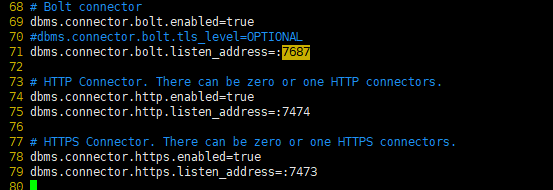
6、修改245行,去掉#,允許從遠程url來load csv
dbms.security.allow_csv_import_from_file_urls=true

7、修改265行,去除注釋設置neo4j可讀可寫
dbms.read_only=false

8、3.5.6 版本配置文件(注:各個版本中配置文件是不同的)
#***************************************************************** # Neo4j configuration # # For more details and a complete list of settings, please see # https://neo4j.com/docs/operations-manual/current/reference/configuration-settings/ #***************************************************************** # The name of the database to mount #dbms.active_database=graph.db # Paths of directories in the installation. #dbms.directories.data=data #dbms.directories.plugins=plugins #dbms.directories.certificates=certificates #dbms.directories.logs=logs #dbms.directories.lib=lib #dbms.directories.run=run # This setting constrains all `LOAD CSV` import files to be under the `import` directory. Remove or comment it out to # allow files to be loaded from anywhere in the filesystem; this introduces possible security problems. See the # `LOAD CSV` section of the manual for details. # dbms.directories.import=import # Whether requests to Neo4j are authenticated. # To disable authentication, uncomment this line #dbms.security.auth_enabled=false # Enable this to be able to upgrade a store from an older version. #dbms.allow_upgrade=true # Java Heap Size: by default the Java heap size is dynamically # calculated based on available system resources. # Uncomment these lines to set specific initial and maximum # heap size. dbms.memory.heap.initial_size=512m dbms.memory.heap.max_size=1g # The amount of memory to use for mapping the store files, in bytes (or # kilobytes with the 'k' suffix, megabytes with 'm' and gigabytes with 'g'). # If Neo4j is running on a dedicated server, then it is generally recommended # to leave about 2-4 gigabytes for the operating system, give the JVM enough # heap to hold all your transaction state and query context, and then leave the # rest for the page cache. # The default page cache memory assumes the machine is dedicated to running # Neo4j, and is heuristically set to 50% of RAM minus the max Java heap size. dbms.memory.pagecache.size=5g #***************************************************************** # Network connector configuration #***************************************************************** # With default configuration Neo4j only accepts local connections. # To accept non-local connections, uncomment this line: dbms.connectors.default_listen_address=0.0.0.0 # You can also choose a specific network interface, and configure a non-default # port for each connector, by setting their individual listen_address. # The address at which this server can be reached by its clients. This may be the server's IP address or DNS name, or # it may be the address of a reverse proxy which sits in front of the server. This setting may be overridden for # individual connectors below. #dbms.connectors.default_advertised_address=localhost # You can also choose a specific advertised hostname or IP address, and # configure an advertised port for each connector, by setting their # individual advertised_address. # Bolt connector dbms.connector.bolt.enabled=true #dbms.connector.bolt.tls_level=OPTIONAL dbms.connector.bolt.listen_address=:7687 # HTTP Connector. There can be zero or one HTTP connectors. dbms.connector.http.enabled=true dbms.connector.http.listen_address=:7474 # HTTPS Connector. There can be zero or one HTTPS connectors. dbms.connector.https.enabled=true dbms.connector.https.listen_address=:7473 # Number of Neo4j worker threads. #dbms.threads.worker_count= #***************************************************************** # SSL system configuration #***************************************************************** # Names of the SSL policies to be used for the respective components. # The legacy policy is a special policy which is not defined in # the policy configuration section, but rather derives from # dbms.directories.certificates and associated files # (by default: neo4j.key and neo4j.cert). Its use will be deprecated. # The policies to be used for connectors. # # N.B: Note that a connector must be configured to support/require # SSL/TLS for the policy to actually be utilized. # # see: dbms.connector.*.tls_level #bolt.ssl_policy=legacy #https.ssl_policy=legacy #***************************************************************** # SSL policy configuration #***************************************************************** # Each policy is configured under a separate namespace, e.g. # dbms.ssl.policy.<policyname>.* # # The example settings below are for a new policy named 'default'. # The base directory for cryptographic objects. Each policy will by # default look for its associated objects (keys, certificates, ...) # under the base directory. # # Every such setting can be overridden using a full path to # the respective object, but every policy will by default look # for cryptographic objects in its base location. # # Mandatory setting #dbms.ssl.policy.default.base_directory=certificates/default # Allows the generation of a fresh private key and a self-signed # certificate if none are found in the expected locations. It is # recommended to turn this off again after keys have been generated. # # Keys should in general be generated and distributed offline # by a trusted certificate authority (CA) and not by utilizing # this mode. #dbms.ssl.policy.default.allow_key_generation=false # Enabling this makes it so that this policy ignores the contents # of the trusted_dir and simply resorts to trusting everything. # # Use of this mode is discouraged. It would offer encryption but no security. #dbms.ssl.policy.default.trust_all=false # The private key for the default SSL policy. By default a file # named private.key is expected under the base directory of the policy. # It is mandatory that a key can be found or generated. #dbms.ssl.policy.default.private_key= # The private key for the default SSL policy. By default a file # named public.crt is expected under the base directory of the policy. # It is mandatory that a certificate can be found or generated. #dbms.ssl.policy.default.public_certificate= # The certificates of trusted parties. By default a directory named # 'trusted' is expected under the base directory of the policy. It is # mandatory to create the directory so that it exists, because it cannot # be auto-created (for security purposes). # # To enforce client authentication client_auth must be set to 'require'! #dbms.ssl.policy.default.trusted_dir= # Client authentication setting. Values: none, optional, require # The default is to require client authentication. # # Servers are always authenticated unless explicitly overridden # using the trust_all setting. In a mutual authentication setup this # should be kept at the default of require and trusted certificates # must be installed in the trusted_dir. #dbms.ssl.policy.default.client_auth=require # It is possible to verify the hostname that the client uses # to connect to the remote server. In order for this to work, the server public # certificate must have a valid CN and/or matching Subject Alternative Names. # Note that this is irrelevant on host side connections (sockets receiving # connections). # To enable hostname verification client side on nodes, set this to true. #dbms.ssl.policy.default.verify_hostname=false # A comma-separated list of allowed TLS versions. # By default only TLSv1.2 is allowed. #dbms.ssl.policy.default.tls_versions= # A comma-separated list of allowed ciphers. # The default ciphers are the defaults of the JVM platform. #dbms.ssl.policy.default.ciphers= #***************************************************************** # Logging configuration #***************************************************************** # To enable HTTP logging, uncomment this line #dbms.logs.http.enabled=true # Number of HTTP logs to keep. #dbms.logs.http.rotation.keep_number=5 # Size of each HTTP log that is kept. #dbms.logs.http.rotation.size=20m # To enable GC Logging, uncomment this line #dbms.logs.gc.enabled=true # GC Logging Options # see http://docs.oracle.com/cd/E19957-01/819-0084-10/pt_tuningjava.html#wp57013 for more information. #dbms.logs.gc.options=-XX:+PrintGCDetails -XX:+PrintGCDateStamps -XX:+PrintGCApplicationStoppedTime -XX:+PrintPromotionFailure -XX:+PrintTenuringDistribution # For Java 9 and newer GC Logging Options # see https://docs.oracle.com/javase/10/tools/java.htm#JSWOR-GUID-BE93ABDC-999C-4CB5-A88B-1994AAAC74D5 #dbms.logs.gc.options=-Xlog:gc*,safepoint,age*=trace # Number of GC logs to keep. #dbms.logs.gc.rotation.keep_number=5 # Size of each GC log that is kept. #dbms.logs.gc.rotation.size=20m # Log level for the debug log. One of DEBUG, INFO, WARN and ERROR. Be aware that logging at DEBUG level can be very verbose. #dbms.logs.debug.level=INFO # Size threshold for rotation of the debug log. If set to zero then no rotation will occur. Accepts a binary suffix "k", # "m" or "g". #dbms.logs.debug.rotation.size=20m # Maximum number of history files for the internal log. #dbms.logs.debug.rotation.keep_number=7 #***************************************************************** # Miscellaneous configuration #***************************************************************** # Enable this to specify a parser other than the default one. #cypher.default_language_version=3.0 # Determines if Cypher will allow using file URLs when loading data using # `LOAD CSV`. Setting this value to `false` will cause Neo4j to fail `LOAD CSV` # clauses that load data from the file system. dbms.security.allow_csv_import_from_file_urls=true # Value of the Access-Control-Allow-Origin header sent over any HTTP or HTTPS # connector. This defaults to '*', which allows broadest compatibility. Note # that any URI provided here limits HTTP/HTTPS access to that URI only. #dbms.security.http_access_control_allow_origin=* # Value of the HTTP Strict-Transport-Security (HSTS) response header. This header # tells browsers that a webpage should only be accessed using HTTPS instead of HTTP. # It is attached to every HTTPS response. Setting is not set by default so # 'Strict-Transport-Security' header is not sent. Value is expected to contain # directives like 'max-age', 'includeSubDomains' and 'preload'. #dbms.security.http_strict_transport_security= # Retention policy for transaction logs needed to perform recovery and backups. dbms.tx_log.rotation.retention_policy=1 days # Only allow read operations from this Neo4j instance. This mode still requires # write access to the directory for lock purposes. dbms.read_only=false # Comma separated list of JAX-RS packages containing JAX-RS resources, one # package name for each mountpoint. The listed package names will be loaded # under the mountpoints specified. Uncomment this line to mount the # org.neo4j.examples.server.unmanaged.HelloWorldResource.java from # neo4j-server-examples under /examples/unmanaged, resulting in a final URL of # http://localhost:7474/examples/unmanaged/helloworld/{nodeId} #dbms.unmanaged_extension_classes=org.neo4j.examples.server.unmanaged=/examples/unmanaged # A comma separated list of procedures and user defined functions that are allowed # full access to the database through unsupported/insecure internal APIs. #dbms.security.procedures.unrestricted=my.extensions.example,my.procedures.* # A comma separated list of procedures to be loaded by default. # Leaving this unconfigured will load all procedures found. #dbms.security.procedures.whitelist=apoc.coll.*,apoc.load.* #******************************************************************** # JVM Parameters #******************************************************************** # G1GC generally strikes a good balance between throughput and tail # latency, without too much tuning. dbms.jvm.additional=-XX:+UseG1GC # Have common exceptions keep producing stack traces, so they can be # debugged regardless of how often logs are rotated. dbms.jvm.additional=-XX:-OmitStackTraceInFastThrow # Make sure that `initmemory` is not only allocated, but committed to # the process, before starting the database. This reduces memory # fragmentation, increasing the effectiveness of transparent huge # pages. It also reduces the possibility of seeing performance drop # due to heap-growing GC events, where a decrease in available page # cache leads to an increase in mean IO response time. # Try reducing the heap memory, if this flag degrades performance. dbms.jvm.additional=-XX:+AlwaysPreTouch # Trust that non-static final fields are really final. # This allows more optimizations and improves overall performance. # NOTE: Disable this if you use embedded mode, or have extensions or dependencies that may use reflection or # serialization to change the value of final fields! dbms.jvm.additional=-XX:+UnlockExperimentalVMOptions dbms.jvm.additional=-XX:+TrustFinalNonStaticFields # Disable explicit garbage collection, which is occasionally invoked by the JDK itself. dbms.jvm.additional=-XX:+DisableExplicitGC # Remote JMX monitoring, uncomment and adjust the following lines as needed. Absolute paths to jmx.access and # jmx.password files are required. # Also make sure to update the jmx.access and jmx.password files with appropriate permission roles and passwords, # the shipped configuration contains only a read only role called 'monitor' with password 'Neo4j'. # For more details, see: http://download.oracle.com/javase/8/docs/technotes/guides/management/agent.html # On Unix based systems the jmx.password file needs to be owned by the user that will run the server, # and have permissions set to 0600. # For details on setting these file permissions on Windows see: # http://docs.oracle.com/javase/8/docs/technotes/guides/management/security-windows.html #dbms.jvm.additional=-Dcom.sun.management.jmxremote.port=3637 #dbms.jvm.additional=-Dcom.sun.management.jmxremote.authenticate=true #dbms.jvm.additional=-Dcom.sun.management.jmxremote.ssl=false #dbms.jvm.additional=-Dcom.sun.management.jmxremote.password.file=/absolute/path/to/conf/jmx.password #dbms.jvm.additional=-Dcom.sun.management.jmxremote.access.file=/absolute/path/to/conf/jmx.access # Some systems cannot discover host name automatically, and need this line configured: #dbms.jvm.additional=-Djava.rmi.server.hostname=$THE_NEO4J_SERVER_HOSTNAME # Expand Diffie Hellman (DH) key size from default 1024 to 2048 for DH-RSA cipher suites used in server TLS handshakes. # This is to protect the server from any potential passive eavesdropping. dbms.jvm.additional=-Djdk.tls.ephemeralDHKeySize=2048 # This mitigates a DDoS vector. dbms.jvm.additional=-Djdk.tls.rejectClientInitiatedRenegotiation=true #******************************************************************** # Wrapper Windows NT/2000/XP Service Properties #******************************************************************** # WARNING - Do not modify any of these properties when an application # using this configuration file has been installed as a service. # Please uninstall the service before modifying this section. The # service can then be reinstalled. # Name of the service dbms.windows_service_name=neo4j #******************************************************************** # Other Neo4j system properties #******************************************************************** dbms.jvm.additional=-Dunsupported.dbms.udc.source=tarball
啟動:進入bin目錄執行./neo4j start
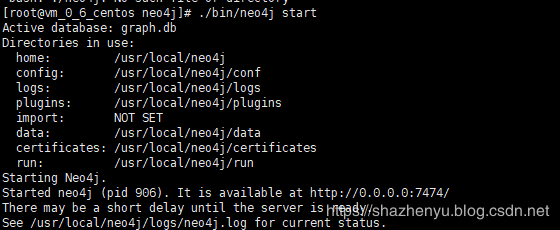
停止:進入bin目錄執行./neo4j stop

查看狀態:進入bin目錄執行./neo4j status

http://服務器ip:7474/browser/
在瀏覽器訪問圖數據庫所在的機器上的7474端口(第一次訪問賬號neo4j,密碼neo4j,會提示修改初始密碼)
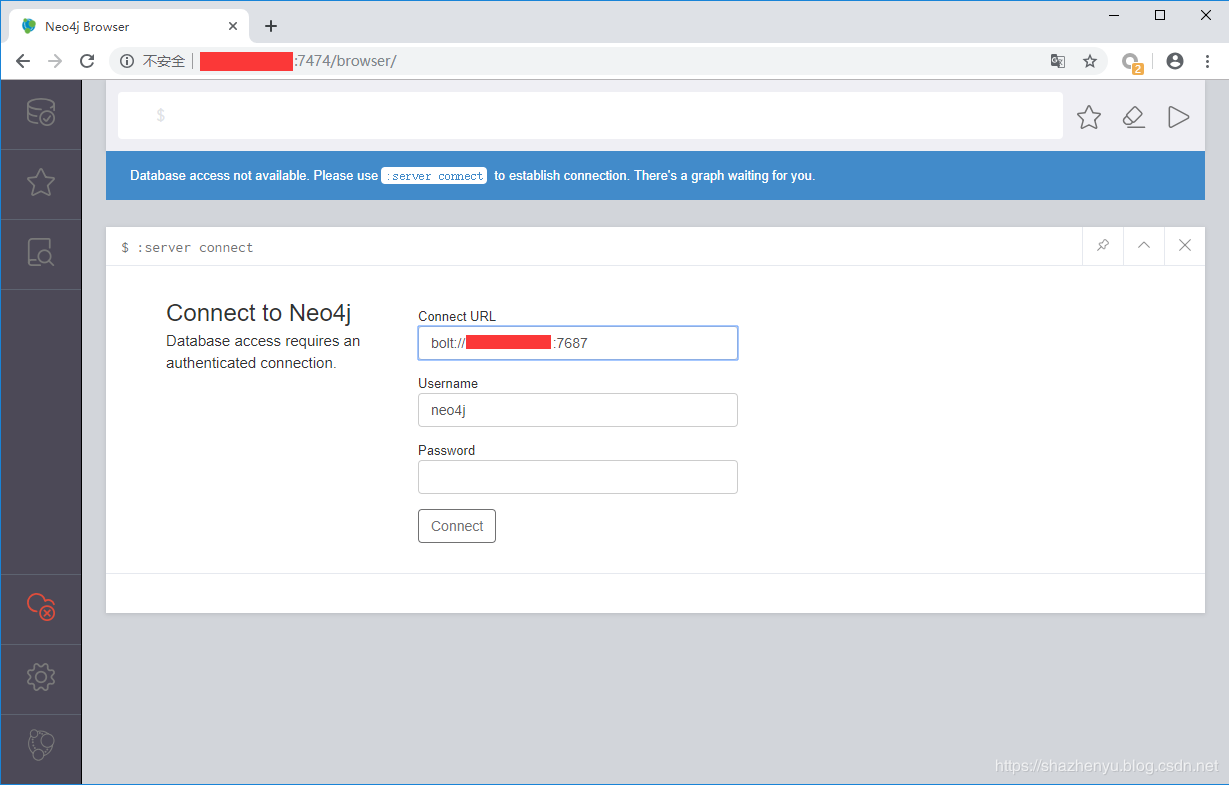
設置完密碼后,點擊左上角數據庫,就能看到圖數據庫里面的信息了
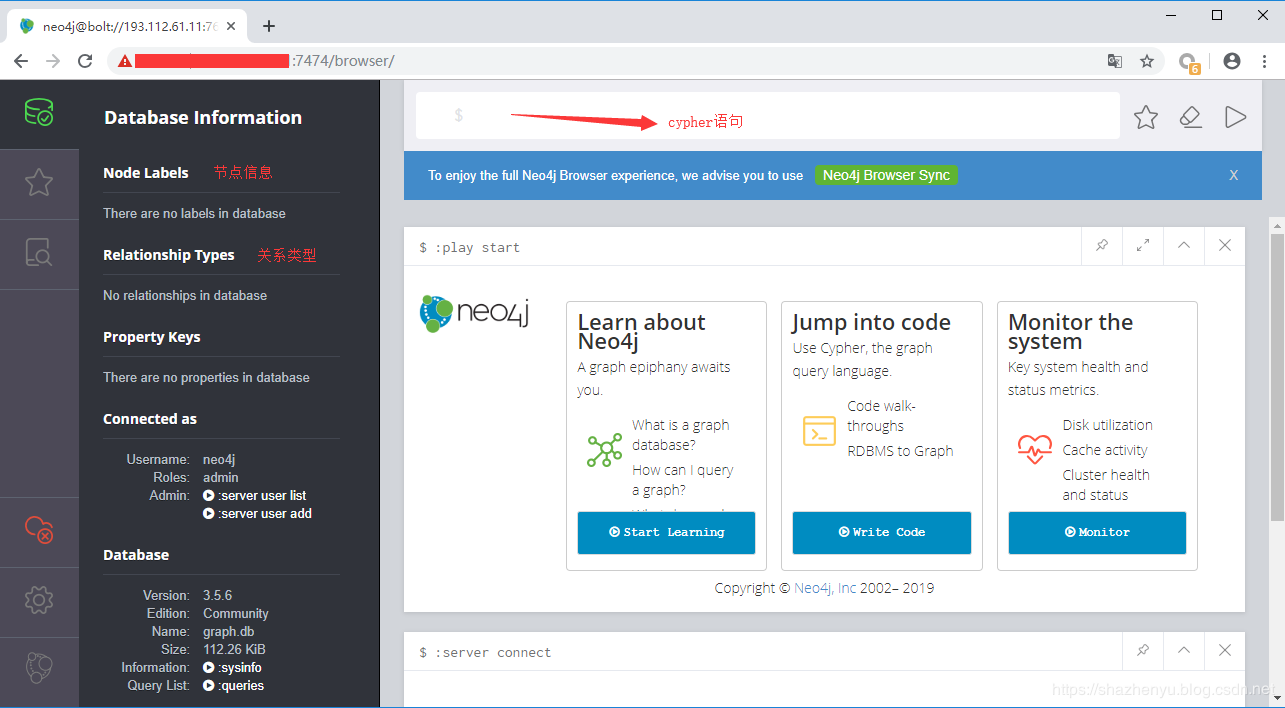
pip install py2neo
如果安不上,請用:
pip install git+https://github.com/nigelsmall/py2neo.git

官網地址:https://py2neo.org/v3/index.html
更多內容請參考官網給的命令:
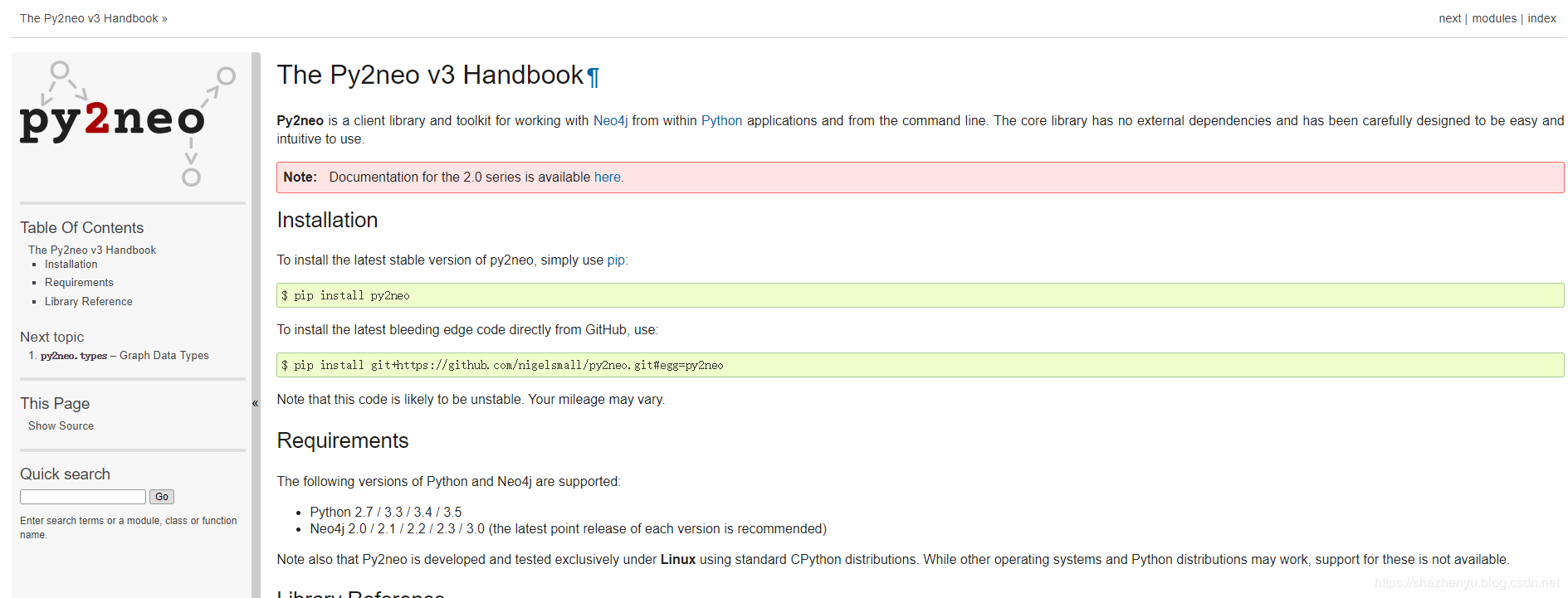
效果圖
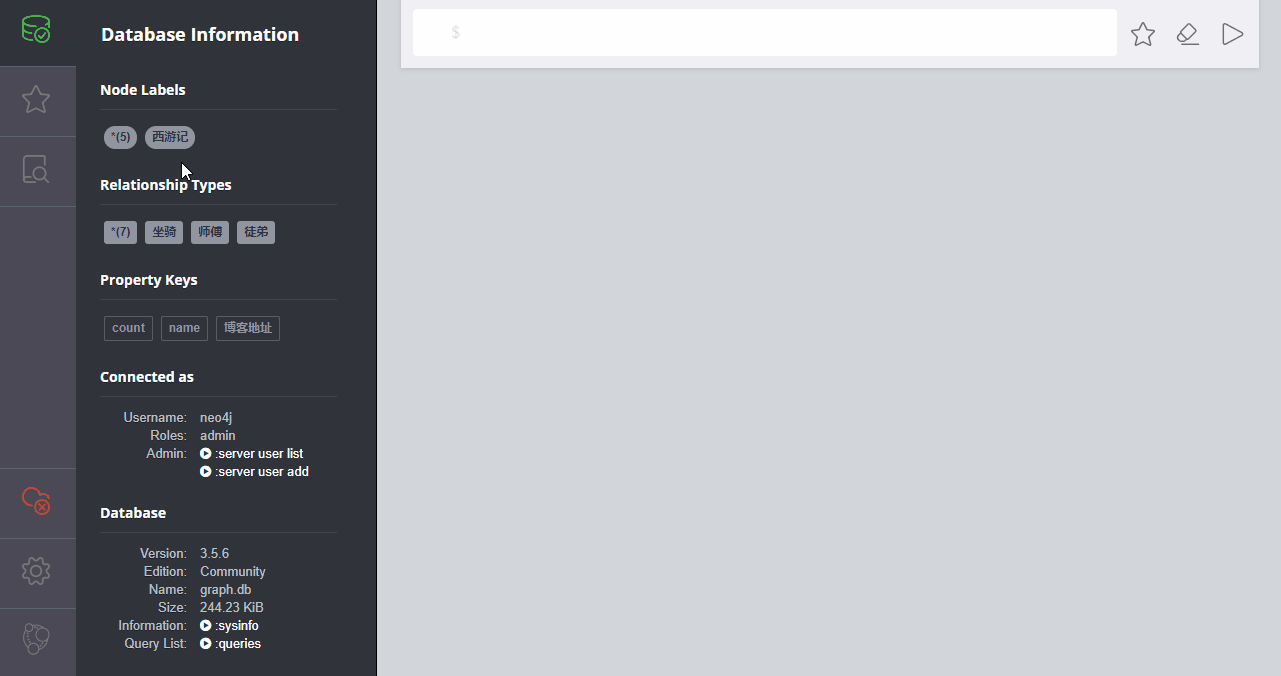
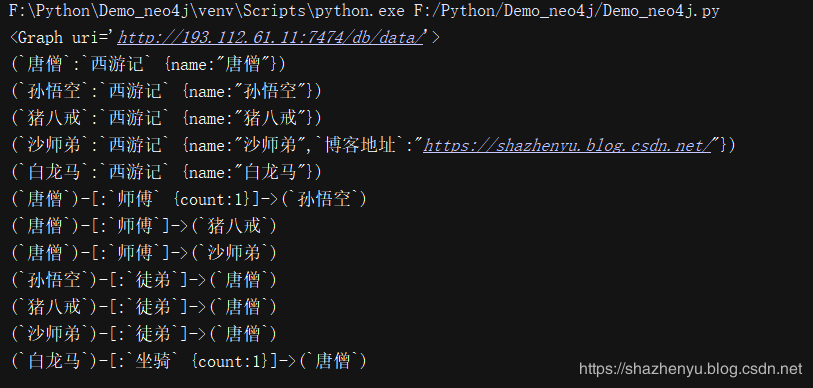
簡單講解
如上圖,是本示例的效果。
其中,我加了5個節點信息,3種關系(7個分支的關系),還有3種屬性。
這里是給了節點加了屬性,例如我給自己加了“博客地址”的屬性,屬性值為“https://www.jb51.net/”。
還可以給關系加屬性,這里沒做展示,方法是類似的。
完整源碼
from py2neo import Graph, Node, Relationship
graph = Graph(host='IP地址', http_port=7474, user='neo4j', password='123456')
# 清空庫
graph.delete_all()
# 創建結點
test_node_0 = Node('西游記', name='唐僧') # 修改的部分
test_node_1 = Node('西游記', name='孫悟空') # 修改的部分
test_node_2 = Node('西游記', name='豬八戒') # 修改的部分
test_node_3 = Node('西游記', name='沙師弟') # 修改的部分
test_node_4 = Node('西游記', name='白龍馬') # 修改的部分
test_node_3.setdefault("博客地址",'https://shazhenyu.blog.csdn.net/')
graph.create(test_node_0)
graph.create(test_node_1)
graph.create(test_node_2)
graph.create(test_node_3)
graph.create(test_node_4)
# 創建關系
# 分別建立了test_node_1指向test_node_2和test_node_2指向test_node_1兩條關系,關系的類型為"丈夫、妻子",兩條關系都有屬性count,且值為1。
node_0_node_1 = Relationship(test_node_0, '師傅', test_node_1)
node_0_node_2 = Relationship(test_node_0, '師傅', test_node_2)
node_0_node_3 = Relationship(test_node_0, '師傅', test_node_3)
node_1_node_0 = Relationship(test_node_1, '徒弟', test_node_0)
node_2_node_0 = Relationship(test_node_2, '徒弟', test_node_0)
node_3_node_0 = Relationship(test_node_3, '徒弟', test_node_0)
node_4_node_0 = Relationship(test_node_4, '坐騎', test_node_0)
node_0_node_1['count'] = 1
node_4_node_0['count'] = 1
graph.create(node_0_node_1)
graph.create(node_0_node_2)
graph.create(node_0_node_3)
graph.create(node_1_node_0)
graph.create(node_2_node_0)
graph.create(node_3_node_0)
graph.create(node_4_node_0)
print(graph)
print(test_node_0)
print(test_node_1)
print(test_node_2)
print(test_node_3)
print(test_node_4)
print(node_0_node_1)
print(node_0_node_2)
print(node_0_node_3)
print(node_1_node_0)
print(node_2_node_0)
print(node_3_node_0)
print(node_4_node_0)
本文詳細講解了非關系型圖數據庫Neo4j安裝方法及Python3連接操作Neo4j方法實例,更多關于Python3操作Neo4j的知識請查看下面的相關鏈接
免責聲明:本站發布的內容(圖片、視頻和文字)以原創、轉載和分享為主,文章觀點不代表本網站立場,如果涉及侵權請聯系站長郵箱:is@yisu.com進行舉報,并提供相關證據,一經查實,將立刻刪除涉嫌侵權內容。